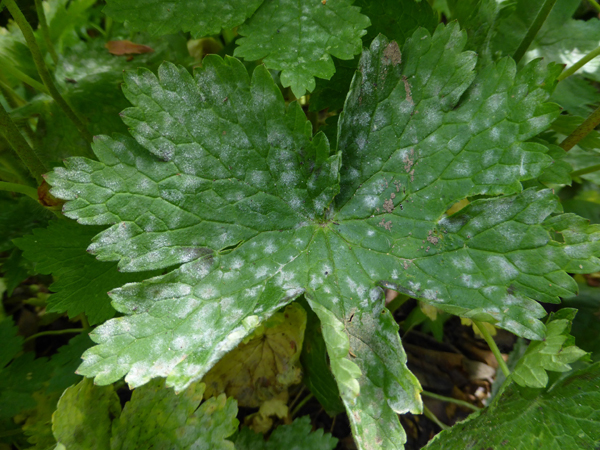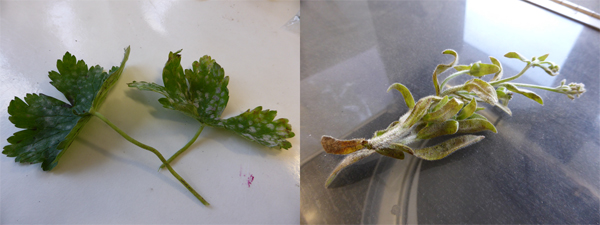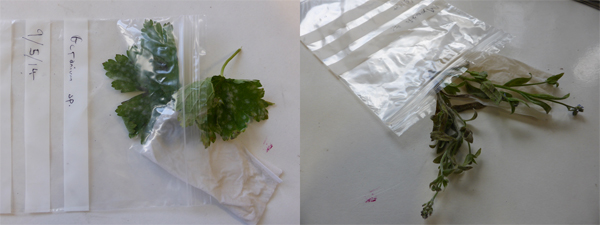Tony Carter asked me to circulate this to members regarding research into Powdery Mildews. Please contribute if you are able 🙂
Powdery mildews commonly occur on garden plants, are unsightly, and can cause serious damage. To help understand how widespread powdery mildews are, both in terms of geography and hosts, the Royal Horticultural Society and University of Reading are working together to identify and map as many powdery mildews as possible over the next two growing seasons. You can help by supplying us with infected plant samples and in exchange we will do our best to tell you what mildew is infecting your plant.
Figure 1: Geranium sp. infected with Neoerysiphe geranii in the University of Reading, Harris Gardens
With over 900 named species, occurring on more than 10,000 different plant hosts, evenexperts struggle to ID them effectively. I am able to collect and analyse many powdery mildew samples around the University campus and further afield in Reading. However, it is necessary to gain more samples, from more UK locations, on more host plants, in order to better understand the problem in UK gardens.
Using DNA sequences I will be able to identify and map which powdery mildews occur where and when they are most prevalent and ultimately develop short DNA sequences allowing for easy ID of similar samples in future.
Quick, accurate and efficient identification of these garden, fungal foes will help to track the presence of British based species on their host plants, perhaps discovering new species invasive to this island. It will also allow us to track which have recently expanded their host ranges to infect new plant species.
UK gardeners and plant enthusiasts can help to build the global knowledge of Fungi and plant diseases. To help this important research please collect and send your infected plant material to me (please try to follow the steps below)!
Figure2: Please try to pick a significant portion of the infected plant: an entire leaf (such as that of this Geraniumsp.) or shoot (like this Myosotis arvensis (Field Forget-me-not)) is best.
I will record the appearance of your fungi, and then pulverise a small part of it to analyse its DNA. Once identified your sample will be added to a national powdery mildew database and you will be sent a link to the relevant record.
Figure 3: Adding fresh leaves to a ‘slightly inflated bag’ will help to preserve the sample.
How to…pick and send a powdery mildew sample:
- Locate powdery mildew on plant host.
- Prune off several whole leaves (fig. 2)
- Put the fresh leaves in a slightly inflated sealed bag (fig. 3).
- Send to:
Oliver Ellingham School of Biological Sciences Harborne Building University of Reading Whiteknights Reading Berkshire RG6 6AS
United Kingdom
…along with the postcode/grid reference of where the sample was found, your email address and the host plants name. If you can add a GPS location and/or photograph of the plant in growth this would be most helpful.
- We will email you when results are available. This may take several weeks.
This information will help to form a more complete picture of powdery mildew presence in the UK and to develop cutting-edge, molecular identification techniques.
Many thanks to all!



